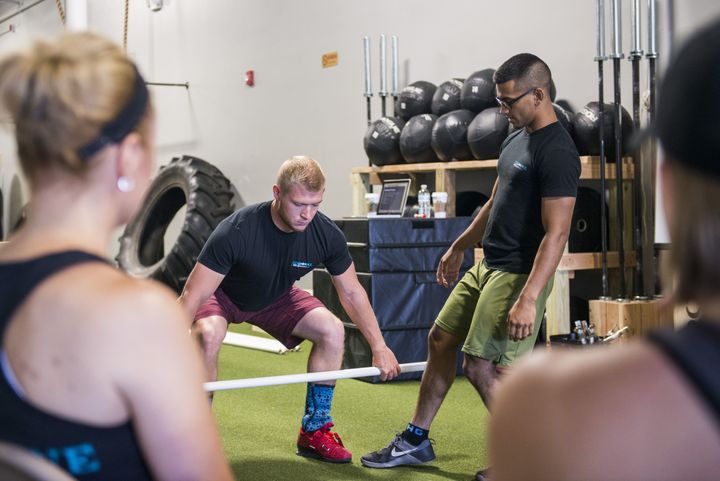
CrossFit Alcides
I know we’re nitpicking the little things here, but Olympic Weightlifting is a game of millimeters. A minuscule shift in technique or mindset can make all the difference. I had a tough time with my start position when I first started lifting.
I knew you needed to start with the bar over your feet (base of support). Despite doing this, the bar would “roll” right before it would leave the floor. Either being too close or too far away from me. This makes all the difference throughout the rest of your lift.
At heavier weights, the barbell won’t have it. The solid foundation starts from the floor. Even if you perform the rest of the lift perfectly, something will feel “off”.
It wasn’t until I realized the importance of the bar traveling vertically that things clicked for me.
The Two Start Positions They Tested
This study measured the amount of horizontal bar displacement (bar traveling away) and power output in the Snatch and Clean while comparing two different start positions. The guys at S&C Research Review always do a great job with their monthly sports science summaries.
Traditional - Barbell is directly over the toes and under the AC joint (between the highest part of the shoulder and the collarbone). The back position is also much more vertical when compared to the New position.
New - Barbell was directly over mid-foot and under the lower part of your shoulder blade (medial and inferior aspects of the scapula). Hips were a little higher and involved a more horizontal back position when compared to the Traditional method.
It’s interesting how they found that there wasn’t really much of an effect on power output besides a slight trend for the New method to be greater (by 2.2-2.6%).
Here’s what matters. The New method found LESS horizontal displacement in the Snatch by 40.3mm and in the Clean by 31.9mm.
What does this mean?
The New style showed that the bar was able to travel in a straighter path.
This verticality is what we’re after. And if you’re a CrossFitter who does a lot of “Touch N Go” reps, this is particularly useful to you too. Notice where the bar lands every time you tap the floor.
The other thing that clicked for me was thinking about keeping the lower part of your shoulder blade over the bar in the New method. You will do this until about mid-thigh, then let it rip as you perform the second pull.
The Snatch and Clean can sometimes feel awkward and off balance because the shoulders do not remain over the bar long enough. Now you’ll know what to do when you coach says “Keep your shoulders over the bar!” or “Be patient.”
You will feel a difference in stability and control, which will in turn, allow you to move like an explosive Energizer bunny.
Misbah is a weakness manager for newcomers and CrossFitters looking to get stronger. His coaching practice is centered around filling the holes in movement so you can keep doing what you love for a long time. Misbah is giving away a free gift to HuffPost readers to help you master the Snatch.

